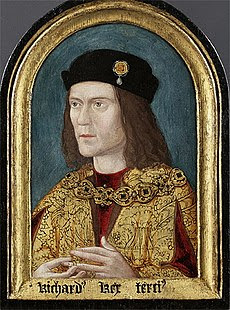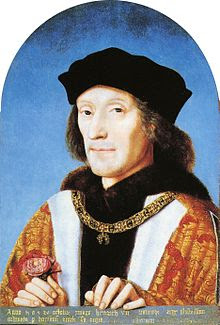FIRST:
USURPATION OF THE THRONE OF THE HOUSE OF
LANCASTER BY THE HOUSE OF YORK
Encyclopaedia Britannica wrote
”
House of York, younger branch of the house of
Plantagenet of
England. In the 15th century, having usurped the throne from the house of
Lancaster, it provided three kings of England—Edward IV,
Edward V, and Richard III—and, in turn defeated, passed on its claims to the Tudor dynasty.” [2]
I think they are wrong here, since, according to my opinion,
there was no ”usurpation” here, in the classic meaning of the
definition.
To go to the definition of ”usurpation”:
”illegal seizure and occupation of a throne.” [3]
I will not go extensively into their remarks that the House
of York ”passed on its claims to the Tudor dynasty”, which is wrong.
Because, although there was a certain [not Tudor,
but Beaufort/Lancaster] claim to the English throne [4], the
House of York had a far stronger claim to the throne.
I refer to that later.
And smart Henry Tudor [who became King Henry
VII and was undoubtedly aware of that stronger York claim]
claimed the throne as ”right of conquest”,not
by ”right of inheritance”, after
his victory in the Battle of Bosworth, where he defeated
the Yorkist King Richard III. [5]
And as a ”right of conquest” the legality of Henry’s kingship
was considered generally. [6]
No, the main point I want to focus here is Encyclopaedia Britannica’s remark:
”‘
House of York, younger branch of the house of
Plantagenet of
England. In the 15th century, having usurped the throne from the house of
Lancaster” [7]
USURPATION
THE ACT OF ACCORD
I said it before
According the definition, usurpation is
”illegal seizure and occupation of a throne.”
That means not only deposing a King
(which was almost a deadly sin in the Middle
Ages), but also through someone
who had none or lesser right to the throne.
In this case, at first there was no deposal of
the throne at all, since there was ”the Act of Accord”
and later, when King Edward IV ascended the
throne, the deposal of King Henry VI was not as ”illegal”
as it seemed, because of two factors:
The stronger claim of the House of York to the throne,
[the Mortimer claim to the throne],
as the fact, that the House of Lancaster itself rose into power
by usurpation.
But first the Act of Accord
I referred to the fact, that there was no deposal at all
at first, mentioning the Act of Accord in 1460. [8].
that included, that King Henry VI remained King of England,
but that Richard, Duke of York and his heirs would
succeed Henry, thus desinheriting Henry´s son, Edward of Westminster. [9]
Of course one can put questions by disinheriting the
Kings´s son, but that’s another story.
The Act of Accord was a legal document, as a
result of negociations between the Duke of York and
the Parliament.(10), after his come back from Ireland
and (indeed) seemed to have tried to seize the throne.[11]
Admitted, that [the deal of the Duke of York with the Parliament] was power play, since the party
of the Duke of York was on the winning hand in the
Wars of the Roses at that moment, but the Act of Accord
did not come ´´out of the blue´´ either.
ACT OF ACCORD
WHAT HAPPENED BEFORE
Susan Higginbotham, historical fictional writer of
Margaret Anjou, mentions the Act of Accord as
´´York, after all, had bullied her husband (Henry VI, my remark)
into disinheriting his own son in favor of York´´ (12)
and it is her right to see it like that, but I have another vision,
because I take the whole history, which preceeded the Accord Act.
into consideration.
Since King Henry VI’s uncle, Humphrey, Duke of Gloucester,
died in 1447, Richard, Duke of York, was heir presumptive
to the then childless King Henry VI. [13]
But from various reasons, King Henry VI, and his wife,
Queen Margaret of Anjou [14] favourited the party
of the Duke’s adversary, Edmund Beaufort, 1st Duke
of Somerset [who was of the Lancaster Swynford line] [15]
and sent Richard as Lieutenant to Ireland,
obviously in a sort of exile.[16]
Tensions grew high in the 50ths between York and
the Duke of Somerset [with the Queen as his ally],
the King got mental ill and in 1453 became father, which
ended York’s position as heir presumptive, but due
to the mental illness of the King, he became Protector
of the Realm twice.
Enmity between York and Somerset [and Margaret of
Anjou] rose farther and probably they wanted York
to be arrested, so he and his allies armed themselves.
A military confrontation was enevitable and broke out between York [with
his brother in law and his nephew, Warwick the Kingmaker as
allies] and the King [actually the Queen and Somerset],
which was the start of the Wars of the Roses.
After several bloody battles, in 1459, the Coventry Parliament
[probably instigated by Margaret of Anjou] attainted York and his allies [declared them to ”traitors” without trial] and forfeited their lives and
estates [17], which left York [according to my opinion]
no choice than first flee to Ireland and later
trying to seize the throne, resulting in the Act of Accord.
I don’t think either York, however ambitious, was after the
throne, before 1460.
He had enough opportunities to have taken the throne before
that [especially when the King was in his power after the
First Battle of St Albans in 1455], but he never made an attempt
untill he was pushed to the edge by the attainder of 1459. [18]
THE ACT OF ACCORD
AFTERMATH
BLOODY WAR, WAKEFIELD
When the Act of Accord had been accepted by the Lancastrian party,
probably King Henry should have remained King till his death, but
the bloody battles intensified.
Understandably, Margaret of Anjou was furious about her son’s disinheritance
and refused to accept it.
She went to Scotland, asking Mary of Guelders, the Queen Regent,
military support against the Yorkist party[19] and the military
confrontations went on.
In her absence, the Battle of Wakefield took place,where the Duke
of York [higly probable] died in battle and his son Edmund Earl of
Rutland, as the Dukes brother in law, the 5th Earl of Salisbury
[the father of Richard Neville, 16th Earl of Warwick, the ”Kingmaker],
were executed after the battle. [20]
Unlike popular belief, Margaret of Anjou was not present at Wakefield, so
she couldn’t have ordered their executions. [21]
She returned to England and defeated Warwick in the 2nd Battle
of St Albans [22], where she was responsible for the
executions following. [23]
However, she spared the life of John Neville, brother of
the Earl of Warwick, probably since the brother
of her commander the 3rd Duke of Somerset
[son to the late 2nd Duke of Somerset, enemy of Richard of York]
was a captive in Yorkist hands. [24]
But relieved as she might have been to get rid of the Duke of York,
she had a more formidable military adversary in his son and heir
Edward, now Duke of York, who defeated the Lancastrian forces in
the bloody and decisive Battle of Towton. [25]
THE ACT OF ACCORD/AFTERMATH
THE DUKE OF YORK’S SON AND HEIR’S
ASCENDANCY TO THE THRONE
KING EDWARD IV
Edward of York was not like his father, who had a loyalty
to the throne till he was pushed to the extremes.
Probably hardened by the loss of his father and brother at
Wakefield [where Warwick also lost his father and brother
Edward’s maternal uncle and cousin],as by an attitude
of machiavellistic politics, he was not inclined
to hold on to the Act of accord, remaining Henry VI King of England.
In fact, since his mental instability, as the reality of
Edward’s victories, he wouldn’t have ruled anyway.
He was imprisoned in the Tower.
At march 1461, Edward was declared King of England, fulfilling
his father’s wishes for his sons.
USURPATION OR NOT?
THE CLAIMS TO THE THRONE OF THE HOUSE
OF YORK
Although Encyclopaedia Britannica calls the overthrowing of the Act
of Accord an usurpation, to my opinion it is no
usurpation at all, since the Lancasters should not have to
be kings all along, due to the superior claim to the throne
of York, as the Lancaster usurpation of King Richard II. [26]
The claims to the throne first.
Richard, Duke of York had superior claims to the throne.
He was the grandson of Edmund of Langley, the fourth son
of King Edward III, but that was not his superior claim, since
the House of Lancaster [The ”King Henry’s” as the Beauforts}
descended from John of Gaunt, the third son of King Edward III.
But it was his mother” side, that gave him the superior claim.[27]
York’s maternal grandfather, Roger Mortimer, 4th Earl of March,
was the materrnal grandson of Lionel of Antwerp, the SECOND son
of King Edward III and that gave him a greater claim than that of the Lancaster.
See the Family Tree
King Edward III
Lionel of Antwerp [second son to Edward III]
Philippa P lantagenet [Lionel’s daughter], married Edmund Mortimer, 3rd
3th Earl of March
Roger, 4th Earl of March [Philippa Plantagenet’s son]
Edmund Mortimer, 5th Earl of March [son to Roger]
Anne Mortimer [daughter to Roger], maried Richard Conisburtgh
[son of Edmund of Langley, first Duke of York]
Richard, Duke of York [son to Anne Mortimer, descendant of
Lionel of Antwerp, second son of Edward II]
Isabel Plantagenet [daughter to Anne Mortimer and sister to
Richard, Duke of York] [28]
MORTIMERS CLAIM TO THE THRONE
But there was more, which asserted the superior York claims.
Since King Richard II was childless, he appointed as his heir
presumptive, Roger Mortimer, 4th Earl of March
[Richard of York’s maternal grandfather].
Roger was the son of Richard II’s cousin Philippa
[Richard II and Philippa were the children of two brothers,
The Black Prince and Lionel of Antwerp, the first and second son
of King Edward III]. [29]
Roger Mortimer never became King, since he died a year before Richard II, but
his heir presumptive right passed to his son, Edmund, 5th Earl of March,
who was the maternal uncle of Richard of York. [30]
However, since Henry Bolingbroke usurped the throne from Richard II, Edmund,
only a boy, was overlooked, so also his superior right to the throne. [31]
However, when Edmund Mortimer [brother to Richard the Duke’s mother,
Anne Mortimer]died childless, York not only inherited his lands and estates,
as his titles, but also his heir presumptive right.
After the death of King Henry VI’s uncle, Humphrey,
Duke of Gloucester, [brother of his father Henry V],York became heir
presumptive till the birth of Henry’s son in 1453, Edward of
Westminster. [32]
WHO WERE THE REAL USURPERS?
LANCASTER USURPATION OF RICHARD II
I have shown above, that it was Henry IV, founder of the House
of Lancaster, who usurped not only the
throne of England by deposing the rightful King Richard II [33],
but also overlooked the rightful heir presumptive, Edmund Mortimer.
When the right to the throne was justly followed, not King Henry IV,
but Edmund Mortimer had ascended the throne and was probably
succeeded by his nephew Richard, Duke of York.
Therefore it is [with all respect] utter nonsense to speak of
an ”usurpation of the throne” by Edward, son of Richard of York,
in 1461.
The only usurpators were the Lancasters.
Amitted, due to the military succesful reign of King Henry V [34],
the usurpation was forgotten, but that didn’t make it undone.
Therefore it were the Mortimers and their descendant
Richard of York, who should have been Kings from the beginning.
I think that was the reason, that York was ousted of power
and sent to Ireland in the late 40s.
And probably the reason, Margaret of Anjou didn’t trust him. [35]
SECOND:
THE ”WEAKNESS” OF THE CLAIM OF
RICHARD OF YORK, SINCE IT WAS DERIVED
FROM FEMALES?
Encyclopaedia Britannica justly confirmed the superior claim of York
to the House of Lancaster, as they correctly state,
that was the reign of Henry VI succesful, the claim
was never advanced at all.
I also think, that the only reason York advanced his
claim was the unsuccesful rule of Henry VI,
due to his mental problems, his corrupt advisors,
as the great losses in the Hundred Years War.
But I disagree with Encyclopaedia Britannica on the point, that the weakness
in the claim of York was, that it was derived from females.
Because although men had the first rights to the throne,
there was no Salic Law in England, that exclude women from
the throne, nor from claims to the throne, which passed
through their descendants.
For example Queen Maud [mother to the later
King Henry II and daughter to King Henry I, who was the
son to William the Conqueror] was declared heiress to
the throne by her father after the death of his only son. [36]
Granted, the Norman barons didn’t accept her after the death
of her father and civil war burst out [37], but were women excluded,
her father should not have declare his daughter heiress.
But moreover, claiming rights to the throne from female line
is done in English history at several occasions and was
considered legally and valid.
FOUR IMPORTANT HISTORICAL OCCASIONS
BY WHICH MEN CLAIMED OR INHERITED THE THRONE
FROM FEMALE LINE
There are at least four important occasions by which men
claimed the throne from female descent.
First:
Stephen of Blois, cousin to Queen Maud [daughter
of King Henry I and heiress to the throne], who claimed
the right to the throne through female line [being a maternal
grandson to William the Conqueror]
The first was in the time of Queen Maud [called also
”Empress Maud because of her earlier marriage with
the Holy Roman Emperor].
Her right to the English throne was challenged by her
cousin, Stephen of Blois, who claimed the throne
through his grandfather, William the Conqueror, who
was his maternal grandfather. [38]
He had men enough, prepared to support his maternal
claim, took the throne, drove his cousin Mathilda and her husband Henry
of Anjou out of the country and a yearlong military struggle, the
anarchy, started. [39]
Eventually, after the death of Stephen’s son and heir,
a deal was made, that Stephen would rule, but had to recognise
Maud’s son, Henry of Anjou, as his heir. [40]
Second:
Henry of Anjou [King Henry II], son to Queen Maud, who inherited the throne through his mother.
After Stephen’s death, Henry of Anjou would become King Henry
II [41], father to Richard Lion Heart [Richard I] (42) and John, King
of England [John Lackland] [43]
Henry II was the founder of the Plantagenet Dynasty. [44]
So here are two men who claimed or inherited their throne
from females.
Stephen of Blois, claiming the throne as a grandson of
William the Conqueror from his mother’s side as
King Henry II, who inherited the throne from his mother’s
side.
No ”weakness” here.
Third
King Edward III, who claimed the French throne through
his mother, Isabella of France
Resulting in the Hundred Years War with France, being the
maternal grandson of the French King Philip IV.
Perhaps most famous is the claim to the French throne,
laid by King Edward III [45], through is mother, Queen
Isabella of France (46), who was the daughter of the French
King, Philip IV (47)
That made Edward III the maternal grandson to a French King.
When the last son of King Philip IV, named Charles IV (48),
died in 1328 without a male heir, the question was
Who is going to be the new King!
His sister Isabella, mother of Edward III, claimed the throne
for her son, but problem was, that since 1316 the Salic
Law was introduced in France (which excluded women as
heirs to the throne). (49)
This was no coincidence, but due to an adultery scandal,
involving the wives of Charles IV and his brother Louis X (50),
The Tour de Nesle Affair (51), questioning the paternity
of the sons of the King.
This was particularly urgent after the death of Louis X, since
the legitimacy of his daughter Joan was in question, (52)
due to her mother´s alleged adultery. (53)
Anyway, Isabella´s claim to the throne for Edward III was
rejected, since she, being a woman, was excluded from the
rights to the throne and couldn´t transmit a right what she
didn´t possess. (54)
But that was the French Law.
Point I want to make is, that claiming through a female
was quite strong in England, which didn´t know the Salic
Law.
Eventually Edward III would claim the French throne
anyway [55], which was one of the causes of the
Hundred Year´s war with France.
And that´s my second point I want to state.
Since no one in England questioned Edward´s claim
through a female and the nobles wholeheartedly supported
him in the war with France, female claims were neither
unusual nor ´´weak´´.
FOURTH
LANCASTER CLAIM TO THE THRONE THROUGH
FEMALE LINE/THE QUESTION EDMUND CROUCHBACK
Since Henry Bolingbroke usurped the throne of Richard II in
1399, becoming King Henry IV, a Lancaster right to the throne
was of the greatest importance, that was superior
to that of Richard II, son of the first son of Edward III
as the Mortimer right to the throne [descendants of
Lionel of Antwerp, second son of Edward III.
So Henry IV was clever enough not to base his claim on his
fathers side, since John of Gaunt [his father] was the third son
of Edward III.
In stead of that, he based it on the side of his mother, Blanche,
of Lancaster [56], who was the great granddaughter of Edmund Crouchback.[57]
And Edmund Crouchback was the son of King Henry III [58] and the
younger brother of King Edward I. [59]
One could say.
So what about the claim?
Well, here it is.
According to Henry IV [Lancastrian views], this Edmund Crouchback was
not the second son of Henry III, but his first son in stead of Edward I,
but disinherited because of his bodily deformity [a twisted back]
You see the consequences?
That makes King Edward I, II, III and Richard II a sort of usurpers
and the rights to the throne of Richard II as the Mortimers claim
null and void, since Edward III would be an usurper king.
However, it’s a pity for Henry IV and the other Lancasters, who
claimed the Crouchback case, that there is no proof
whatsoever, that Edward I was not the first son of
King Henry III.
So its pure Lancastrian propaganda. [60]
I mentioned this ”Edmund Crouchback claim” as the fourth
historfical example of men, who based their claims on females
or inherited the throne by females.
A proof, that deriving a right to the throne from females,
as has done by Richard, Duke of York, was not ”weak”
at all, but has proven valid and generally accepted through
English history.
EPILOGUE
To my opinion, the deposing of King Henry VI by Edward of York,
son of Richard, Duke of York, was no usurpation, since
The Duke of York [who passed the right to the throne to his
eldest son, Edward] had a superior right to the throne than King Henry VI,
[called the Mortimer claim]
being the descendant of Lionel of Antwerp, second son
of Edward III, while Henry was the descendant of the third son
of Edward III, John of Gaunt.
In fact, after the death of King Richard II, the Dukes uncle,
Edmund Mortimer, who was heir presumptive to Richard II
should have become King of England.
So by deposing Henry VI, Edward of York took his rightful
place on the throne.
The reason why Edmund Mortimer didn’t become King was
lain in the usurpation of Henry IV [grandfather to Henry VI] of
the throne of Richard II, which was not only illegitimate,
but also overlooking the superior Mortimer claim of Edmund
Mortimer.
Encyclopaedia Britannica also remarked the ”weak point” of the Mortimer claim
[York’s right to the throne] his deriving from females.
I’ve shown four historical examples, by which claims
to the throne [or even inheritance] by females were made,
the most famous Edward III claim to the French throne by
his mother, Queen Isabella [wife to Edward II]
I think I have stated clearly, that the female right is
valid and not weak.
Thank you for travelling with me to the past again
Astrid Essed
Amsterdam
NOTES
[1]
ENGLISH HISTORY/THE WARS OF THE ROSES/
MARGARET OF ANJOU, TWO MAJOR PLAYERS
ASTRID ESSED
THE WARS OF THE ROSES/
RICHARD, DUKE OF YORK, THE CLAIMS TO THE THRONE
OF LANCASTER AND YORK
ASTRID ESSED
THE WARS OF THE ROSES/
CAUSES OF THE WARS OF THE ROSES/A TRAVEL TO THE PAST
ASTRID ESSED
THE WARS OF THE ROSES/MARGARET OF ANJOU/SHE WOLF
OR NOT/COMMENTS ON THE ARTICLE OF MR GARETH RUSELL
ABOUT MARGARET OF ANJOU
ASTRID ESSED
[2]
ENCYCLOPAEDIA BRITANNICA, HOUSE OF YORK
[3]
”illegal seizure and occupation of a throne.”
USURPATION
[4]
”Henry’s main claim to the English throne derived from his mother through the
House of Beaufort. Henry’s mother, Lady Margaret Beaufort, was a great-granddaughter of
John of Gaunt, Duke of Lancaster, fourth son of
Edward III, and his third wife
Katherine Swynford. Katherine was Gaunt’s mistress for about 25 years; when they married in 1396, they already had four children, including Henry’s great-grandfather
John Beaufort.”
WIKIPEDIA
HENRY VII OF ENGLAND
ANCESTRY AND EARLY LIFE
SOURCE
WIKIPEDIA
HENRY VII OF ENGLAND
The Swynford branch of the Lancaster line [the children of John of Gaunt,
son to Edward III and his mistress Kathryn Swynford], called the
”Beauforts”, were legitimised first by King Richard II and later by
King Henry IV [as legitimate son of John of Gaunt, the halfbrother of
the Beauforts], on condition that they should not claim the throne.
CAUSES OF THE WARS OF THE ROSES
MARK GOACHER
The Beauforts were a powerful and wealthy family from the start, and rose to greater power after their (half-)brother and uncle became King Henry IV in 1399. However, in 1406, Henry IV decided that although the Beauforts were legitimate, their genetic line could not be used to make any claim to the throne.”
WIKIPEDIA
HOUSE OF BEAUFORT
http://en.wikipedia.org/wiki/House_of_Beaufort
[5]
WIKIPEDIA
BATTLE OF BOSWORTH
http://en.wikipedia.org/wiki/Battle_of_Bosworth_Field
[6]
”So Henry VII didn’t claim the throne through right of inheritance: he claimed it through the right of conquest, not through any of his own royal lineage.”
WOMEN’S HISTORY
LEGITIMATE ENOUGH HERITAGE?
TUDOR’S CLAIM TO THE THRONE [1485]
http://womenshistory.about.com/od/medbritishwomen/ss/Birth-Controversies-and-the-Wars-of-the-Roses_2.htm
” Henry VII acknowledged the necessity of marrying Elizabeth of York to ensure the stability of his rule and weaken the claims of other surviving members of the House of York, but he ruled in his own right and claimed the throne by right of conquest and not by his marriage to the heir of the House of York.”
WIKIPEDIA
ELIZABETH OF YORK
WIFE OF THE KING
SOURCE
WIKIPEDIA
ELIZABETH OF YORK
” It was truly through the defeat of Richard and the ‘right of conquest’ that Henry claimed the throne.”
TUDOR HISTORY
HENRY VII
[7]
ENCYCLOPAEDIA BRITANNICA
HOUSE OF YORK
[8]
WIKIPEDIA
THE ACT OF ACCORD
THE FULL TEXT OF THE ACT OF ACCORD
BRITAIN EXPRESS
THE ACT OF ACCORD
HISTORY OF WAR
ACT OF ACCORD, 25 OCTOBER 1460
[9]
WIKIPEDIA
THE ACT OF ACCORD
BRITAIN EXPRESS
THE ACT OF ACCORD
HISTORY OF WAR
ACT OF ACCORD, 25 OCTOBER 1460
[10]
WIKIPEDIA
RICHARD, DUKE OF YORK
THE WEEL OF FORTUNE
SOURCE
WIKIPEDIA
RICHARD, DUKE OF YORK
[11]
WIKIPEDIA
RICHARD, DUKE OF YORK
THE WEEL OF FORTUNE
SOURCE
WIKIPEDIA
RICHARD, DUKE OF YORK
[12]
”Margaret undoubtedly rejoiced over York’s death—York, after all, had bullied her husband into disinheriting his own son in favor of York, and Margaret had every reason to fear for her husband’s future in a government controlled by York—but she did not have what to her might well have been the pleasure of seeing her enemy fall.”
MYTHS ABOUT MARGARET OF ANJOU
SUSAN HIGGINBOTHAM
[13]
”The death of Humphrey, duke of Gloucester, in 1447 left York next in line for succession to the throne, and the Beauforts had him sent—virtually banished—to
Ireland as lord lieutenant.”
ENCYCLOPAEDIA BRITANNICA
RICHARD, 3RD DUKE OF YORK
[14]
WIKIPEDIA
MARGARET OF ANJOU
[15]
Kings favouritism of the Somerset and Suffolk party [which
was the ”peace” party to France, more open for
negociations] against the Gloucester [the Kings uncle
Humphrey Duke of Gloucester] and York party
[the war party to France]
CAUSES OF THE WARS OF THE ROSES
MARK GOACHER
[16]
”His attitude toward the Council’s surrender of
Maine, in return for an extension of the truce with France and a French bride for Henry, must have contributed to his appointment on 30 July as
Lieutenant of Ireland. In some ways it was a logical appointment, as Richard was also
Earl of Ulster and had considerable estates in Ireland, but it was also a convenient way of removing him from both England and France.”
WIKIPEDIA
RICHARD DUKE OF YORK
IRELAND
SOURCE
WIKIPEDIA
RICHARD, DUKE OF YORK
[17]
”In December 1459 York, Warwick and Salisbury had suffered
attainder. Their lives were forfeit, and their lands reverted to the king; their heirs would not inherit.”
SOURCE
WIKIPEDIA
RICHARD, DUKE OF YORK
”On this day in 1459 the ‘Wars of the Roses’ between the houses of Lancaster and York took on an increased ferocity. Parliament had not met for three and a half years, since March 1456, when it had been dissolved following the resignation of Richard, duke of York, as Protector and the nominal resumption of authority by the mentally-unstable Henry VI. That summer the seat of government was effectively removed to Coventry, in the Lancastrian heart-lands, and the chief offices of state were allotted to intimates of the queen, Margaret of Anjou.”
ON THIS DAY, 20 NOVEMBER 1459, THE ”PARLIAMENT OF DEVILS
ASSEMBLES AT COVENTRY
HISTORY OF PARLIAMENT ONLINE
WIKIPEDIA
PARLIAMENT OF DEVILS
[18]
”In December 1459 York, Warwick and Salisbury had suffered
attainder. Their lives were forfeit, and their lands reverted to the king; their heirs would not inherit.”
SOURCE
WIKIPEDIA
RICHARD, DUKE OF YORK
”On this day in 1459 the ‘Wars of the Roses’ between the houses of Lancaster and York took on an increased ferocity. Parliament had not met for three and a half years, since March 1456, when it had been dissolved following the resignation of Richard, duke of York, as Protector and the nominal resumption of authority by the mentally-unstable Henry VI. That summer the seat of government was effectively removed to Coventry, in the Lancastrian heart-lands, and the chief offices of state were allotted to intimates of the queen, Margaret of Anjou.”
ON THIS DAY, 20 NOVEMBER 1459, THE ”PARLIAMENT OF DEVILS
ASSEMBLES AT COVENTRY
HISTORY OF PARLIAMENT ONLINE
WIKIPEDIA
PARLIAMENT OF DEVILS
[19]
WIKIPEDIA
MARGARET OF ANJOU
MILITARY CAMPAIGNS
SOURCE
WIKIPEDIA
MARGARET OF ANJOU
”While Mary was still mourning the death of
King James II, the Lancastrian Queen
Margaret of Anjou fled north across the border seeking refuge from the Yorkists. Mary sympathetically aided Margaret and took
Edward of Westminster into her household to keep them out of Yorkist hands.
Mary’s dealings with Margaret were mainly to provide aid to the deposed queen. Mary gave a number of Scottish troops to help Margaret and the Lancastrian cause”
WIKIPEDIA
MARY OF GUELDERS
REGENCY
SOURCE
WIKIPEDIA
MARY OF GUELDERS
[20]
WIKIPEDIA
BATTLE OF WAKEFIELD
CASUALTIES
WIKIPEDIA
BATTLE OF WAKEFIELD
[21]
”While she was attempting to raise further support for the Lancastrian cause in Scotland,
[15] her principal commander,
Henry Beaufort, 3rd Duke of Somerset,
[16] gained a major victory for her at the
Battle of Wakefield on 30 December 1460 by defeating the combined armies of the Duke of York and the Earl of Salisbury. Both men were beheaded and their heads displayed on the gates of the city of York. As Margaret was in Scotland at the time the battle had taken place, it was impossible that she issued the orders for their executions despite popular belief to the contrary.”
WIKIPEDIA
MARGARET OF ANJOU
MILITARY CAMPAIGNS
WIKIPEDIA
MARGARET OF ANJOU
[22]
WIKIPEDIA
SECOND BATTLE OF ST ALBANS
[23]
”Two knights (
Lord Bonville and Sir
Thomas Kyriell, a veteran leader of the
Hundred Years War) had sworn to let him come to no harm, and remained with him throughout. The next morning Margaret asked her son, the seven-year-old Edward of Westminster, how, not whether, the two knights were to die. Edward, thus prompted, sent them to be beheaded.
[6]”
WIKIPEDIA
SECOND BATTLE OF ST ALBANS
AFTERMATH
SOURCE
WIKIPEDIA
SECOND BATTLE OF ST ALBANS
[24]
”John Neville had been captured but was spared execution, as the Duke of Somerset feared that his own younger brother who was in Yorkist hands might be executed in reprisal”
WIKIPEDIA
SECOND BATTLE OF ST ALBANS
AFTERMATH
SOURCE
WIKIPEDIA
SECOND BATTLE OF ST ALBANS
[25]
WIKIPEDIA
BATTLE OF TOWTON
[26]
WARFARE HISTORY BLOG
PRELUDE TO THE WARS OF THE ROSES,
USURPATION,REBELLION AND MEDIEVAL
WARFARE 1387-1403
WIKIPEDIA
HOUSE OF LANCASTER
[27]
CAUSES OF THE WARS OF THE ROSES
MARK GOACHER
”Though Parliament conceded that Richard had the better claim to the throne, they were unwilling to depose him outright. A compromise was reached, and that compromise was the Act of Accord.”
BRITAIN EXPRESS
THE ACT OF ACCORD
THE WARS OF THE ROSES/RICHARD, DUKE OF
YORK/THE CLAIMS TO THE THRONE OF LANCASTER
AND YORK
ASTRID ESSED
[28]
THE WARS OF THE ROSES/RICHARD, DUKE OF
YORK/THE CLAIMS TO THE THRONE OF LANCASTER
AND YORK
ASTRID ESSED
[29]
” During her own lifetime, Philippa was the
heir presumptive to her first cousin
Richard II; she would have been displaced in the succession by any legitimate children of the king. Richard remained childless, so after her death, her position as first in line for the throne passed to her son,
Roger Mortimer, 4th Earl of March. He was killed at the Battle of Kells in Ireland in 1398, making his six-year-old son,
Edmund Mortimer, 5th Earl of March, Richard’s heir presumptive.”
WIKIPEDIA
PHILIPPA, 5TH COUNTESS OF ULSTER
[30]
” During her own lifetime, Philippa was the
heir presumptive to her first cousin
Richard II; she would have been displaced in the succession by any legitimate children of the king. Richard remained childless, so after her death, her position as first in line for the throne passed to her son,
Roger Mortimer, 4th Earl of March. He was killed at the Battle of Kells in Ireland in 1398, making his six-year-old son,
Edmund Mortimer, 5th Earl of March, Richard’s heir presumptive.”
WIKIPEDIA
PHILIPPA, 5TH COUNTESS OF ULSTER
[31]
WIKIPEDIA
EDMUND MORTIMER, 5TH EARL OF MARCH
[32]
WIKIPEDIA
EDWARD OF WESTMINSTER, PRINCE OF WALES
[33]
WARFARE HISTORY BLOG
PRELUDE TO THE WARS OF THE ROSES,
USURPATION,REBELLION AND MEDIEVAL
WARFARE 1387-1403
WIKIPEDIA
HOUSE OF LANCASTER
[34]
WIKIPEDIA
HENRY V OF ENGLAND
CAMPAIGN
SOURCE
WIKIPEDIA
HENRY V OF ENGLAND
[35]
WIKIPEDIA
MARGARET OF ANJOU
ENMITY BETWEEN MARGARET AND THE DUKE OF YORK
SOURCE
WIKIPEDIA
MARGARET OF ANJOU
[36]
”Meanwhile, Matilda’s younger brother,
William Adelin, died in the
White Ship disaster of 1120, leaving England facing a potential succession crisis. On Henry V’s death, Matilda was recalled to
Normandy by her father, who arranged for her to marry
Geoffrey of Anjou to form an alliance to protect his southern borders. Henry I had no further children and nominated Matilda as his heir, making his court swear an
oath of loyalty to her and her successors, but the decision was not popular in the
Anglo-Norman court.”
WIKIPEDIA
EMPRESS MATHILDA
[37]
WIKIPEDIA
THE ANARCHY
[38]
WIKIPEDIA
STEPHEN, KING OF ENGLAND
BIOGRAPHY
STEPHEN OF BLOIS
WIKIPEDIA
ADELA OF NORMANDY
[39]
WIKIPEDIA
THE ANARCHY
[40]
”The
Treaty of Wallingford, also known as the
Treaty of Winchester or the
Treaty of Westminster, was an agreement reached in
England the summer of 1153. It effectively ended a civil war known as
the Anarchy (1135–54), caused by a dispute between
Empress Matilda and her cousin King
Stephen of England over the English crown. The Treaty of Wallingford allowed Stephen to keep the throne until his death (which was to come in October 1154), but forced Stephen to recognise Matilda’s son Henry of Anjou (also called Henry FitzEmpress), who later became
Henry II, as his heir.”
TREATY OF WALLINGFORD, ALSO KNOWN
AS THE TREATY OF WINCHESTER
[41]
WIKIPEDIA
HENRY II OF ENGLAND
[42]
WIKIPEDIA
RICHARD I OF ENGLAND
(43)
WIKIPEDIA
JOHN, KING OF ENGLAND
[44]
WIKIPEDIA
HOUSE OF PLANTAGENET
(45)
WIKIPEDIA
EDWARD III OF ENGLAND
(46)
WIKIPEDIA
ISABELLA OF FRANCE
(47)
WIKIPEDIA
PHILIP IV OF FRANCE
(48)
WIKIPEDIA
CHARLES IV OF FRANCE
(49)
´´ In 1316, a principle was established denying women succession to the French throne.´´
SOURCE
WIKIPEDIA
HUNDRED YEAR´S WAR
(50)
WIKIPEDIA
LOUIS X OF FRANCE
(51)
WIKIPEDIA
TOUR DE NESLE AFFAIR
(52)
´´Louis’ second wife Clementia was pregnant at the time of his death, leaving the succession in doubt. A son would have primacy over Louis’ daughter,
Joan.
[32] A daughter, however, would have a weaker claim to the throne, and would need to compete with Joan’s own claims – although suspicions hung over Joan’s parentage following the scandal in 1314´´
WIKIPEDIA
LOUIS X OF FRANCE
(53)
WIKIPEDIA
TOUR DE NESLE AFFAIR
(54)
´´The French rejected the claim, maintaining that Isabella could not transmit a right which she did not possess.´´
WIKIPEDIA
HUNDRED YEAR´S WAR
(55)
´´ For about nine years (1328-1337), the English had accepted the Valois succession to the French throne. But the interference of the French king, Philip VI, in Edward III’s war against Scotland, led Edward III to reassert his claim to the French throne.
Several overwhelming English victories in the war—especially at
Crecy,
Poitiers, and
Agincourt—raised the prospects of an ultimate English triumph. However, the greater resources of the French monarchy precluded a complete conquest. Starting in 1429, decisive French victories at
Patay,
Formigny, and
Castillon concluded the war in favor of France, with England permanently losing most of its major possessions on the continent.´´
WIKIPEDIA
HUNDRED YEAR´S WAR
[56]
WIKIPEDIA
BLANCHE OF LANCASTER
[57]
WIKIPEDIA
EDMUND CROUCHBACK
[58]
WIKIPEDIA
HENRY III OF ENGLAND
[59]
WIKIPEDIA
EDWARD I OF ENGLAND
[60]
LANCASTER ”EDMUND CROUCHBACK”
CLAIM TO THE THRONE
CAUSES OF THE WARS OF THE ROSES
MARK GOACHER

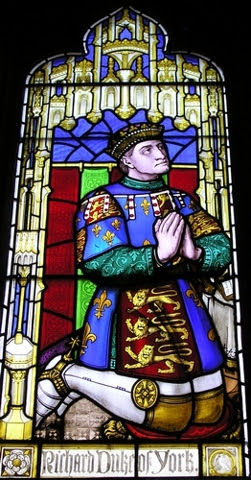
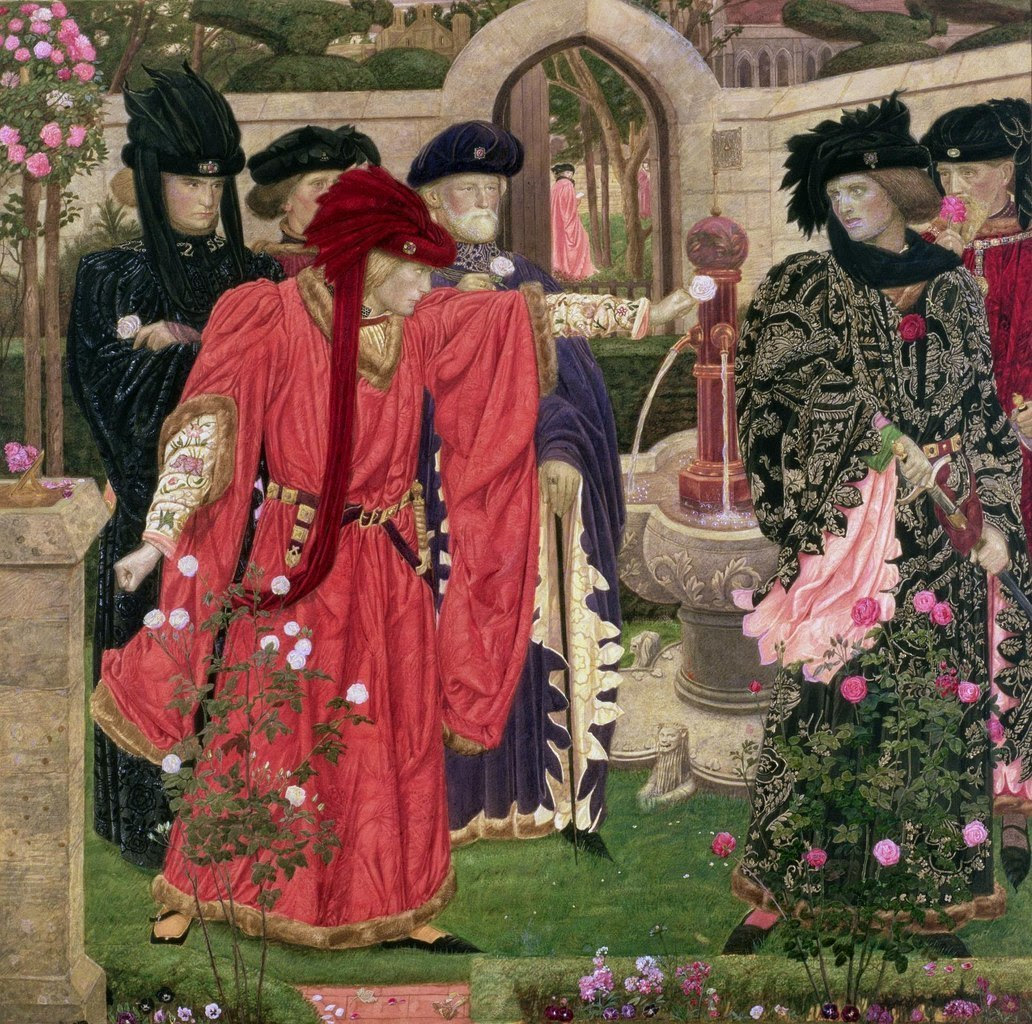
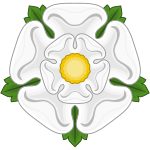

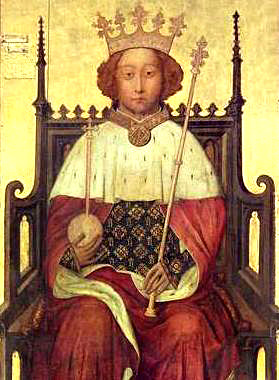
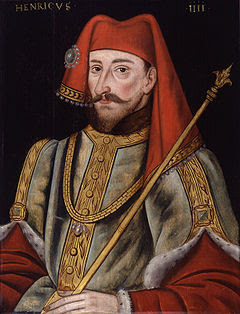
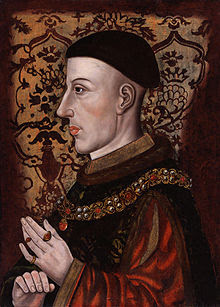
.jpg)




